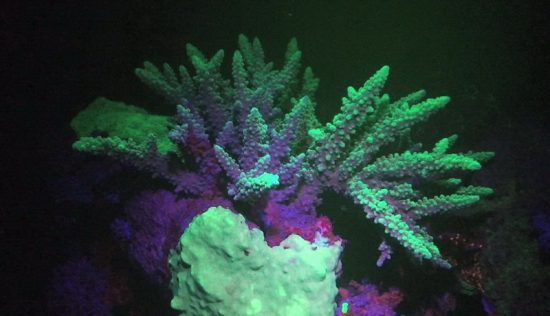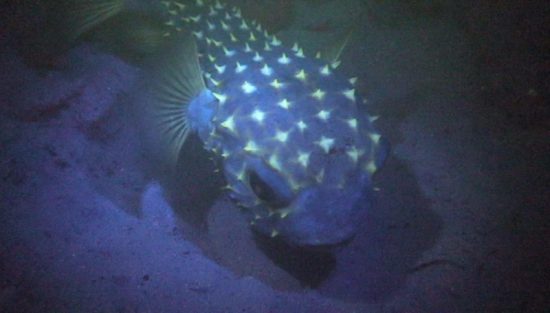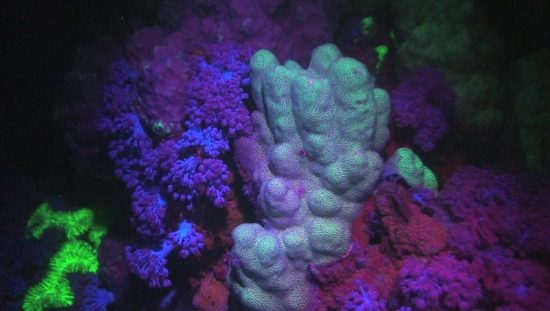





Seeing the underwater world in a different light
Apart from tropical rainforests, the coral reef is a rich habitat
teeming with the most number of different species. Although they look
like flowers, corals are actually well-organised multi-cellular
animals.
The reef serves as a nursery of many fishes, as well as later
pelagics.
During the day, coral reefs present themselves in a variety of colours,
thanks to the corals and the animals that live there. A night dive at a
reef immerses the diver in a magical world filled with many different
colours and hues – it is an enchanting experience.
What this means is that it is the ideal site for fluorescence, or fluo dives, at night.
It is in such a situation that the corals and other animals (like
crabs, tubeworms, fishes, etc) glow in an array of rainbow colours, It
is an experience that makes you feel like you are an alien world, or at
least a parallel universe with an altered colour spectrum. Think Avatar
– underwater.
What are fluo dives?
In fluo diving, short-wave, high-energy light (ideally blue light with
a wavelength of 450 to 465 nm) from special ultraviolet flashlights is
shone at the animal or coral. The organism absorbs the light. If it has
any fluorescent dyes, the light is reflected back as long-wave,
low-energy light. Viewing the scene through special lens filters in
your mask causes the burst of stunning colours embodied by the
organisms to be bathed in a mystifying glow of stunning colours.
What equipment do you need?
For an introductory fluo dive, all you need is blue fluorescent
lighting and a yellow mask filter, and some experience in night diving.
On subsequent dives, you may want a camera with underwater housing and
yellow filters. Presently, there are already some cameras that are
waterproof up to 15 metres, so you may not need the additional
underwater housing. In the professional range, the prices for the
entire set (which includes fluorescent light, barrier filters for the
masks and a good camera) start at about 250-300 Euros and for
professional equipment can be well over 1,000 Euros.
Video: https://www.youtube.com/watch?v=ts4rG1LoT6Q
About the video author
Professor Dr. Horst Grunz has been studying fluorescence techniques in
the laboratory for 35 years. Since there were not any high-performance
fluorescent lamps for night diving in 2007, the author invented the
first commercially available blue HighTech LEDs for Osram
Semiconductors for underwater lighting
(https://www.uni-due.de/fluodives/HistorieD.html).
Grunz is not just a lighting designer, but he has also spent many years
studying fluorescence lighting on coral reefs, in his capacity as a
biologist, diver and filmmaker.
He has posted numerous videos on
YouTube (https://www.uni-due.de/fluodives [German], and
https://www.uni-due.de/fluodives/HomeFinalE.html [English]).
Grunz is
available for free consultations on fluorescent lighting techniques at
email address: horst.grunz@uni-due.de.
 Herbert
Herbert 10th September 2015
10th September 2015